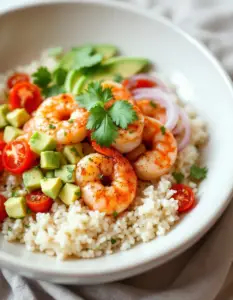Homemade Quiche Lorraine: A Flaky, Savory Taste of Paris
Transport yourself to a Parisian café with this Homemade Quiche Lorraine, featuring a buttery, flaky crust and rich, savory bacon filling. Inspired by the classic version I enjoyed in France, this recipe captures the essence of traditional French baking while remaining approachable for home cooks. The golden-brown pastry crumbles delicately with each bite, revealing a creamy custard studded with smoky lardons and nutty Gruyère cheese.
Perfect for brunch, lunch, or a light dinner, this Quiche Lorraine recipe balances simplicity with elegance. The aroma of caramelized onions and crispy bacon will fill your kitchen, while the velvety egg custard creates a luxurious texture. Whether you’re hosting a gathering or treating yourself to a taste of France, this dish promises to impress with its authentic flavors and beautiful presentation.
Quick Recipe Highlights
- Flavor Profile: A harmonious blend of smoky bacon, nutty Gruyère, and sweet caramelized onions in a rich, creamy custard.
- Texture: Contrasts between the flaky, buttery crust and the smooth, velvety filling create perfect mouthfeel.
- Aroma: The scent of baking pastry mingles with savory bacon and nutty cheese for an irresistible fragrance.
- Visual Appeal: Golden-brown crust with a creamy yellow filling dotted with pink bacon pieces makes for stunning presentation.
- Skill Level Needed: Requires basic pastry skills but includes detailed instructions for perfect results.
- Special Equipment: 9-inch tart pan with removable bottom and pie weights for blind baking.
Recipe Overview
- Difficulty Level: Intermediate due to pastry preparation, but step-by-step guidance ensures success even for less experienced bakers.
- Category: Perfect for brunch, lunch, or light dinner; works well for entertaining or meal prep.
- Cuisine: Classic French dish from the Lorraine region, with roots dating back to medieval Germany.
- Cost: Mid-range ingredients, with potential savings using store-bought crust for time-pressed cooks.
- Season: Excellent year-round, particularly lovely for spring brunches or holiday gatherings.
- Occasion: Ideal for Mother’s Day, bridal showers, or any elegant breakfast gathering.
Why You’ll Love This Quiche Lorraine
The magic of this Homemade Quiche Lorraine lies in its perfect balance of textures and flavors. The buttery, flaky crust provides a satisfying crunch that gives way to the silky custard filling. Each bite delivers the smoky depth of quality bacon, the subtle sweetness of caramelized onions, and the nutty richness of Gruyère cheese. Unlike store-bought versions, this homemade quiche allows you to control ingredient quality and customize flavors to your preference.
Beyond its delicious taste, this recipe offers practical advantages. The quiche can be made ahead and reheats beautifully, making it perfect for meal prep or entertaining. It’s versatile enough to serve warm or at room temperature, and pairs wonderfully with everything from fresh salads to roasted vegetables. The impressive presentation belies its relatively simple preparation, making it a showstopper that’s actually achievable for home cooks.
Nutritionally, this Quiche Lorraine provides high-quality protein from eggs and bacon, along with calcium from the cheese. While indulgent, you can lighten it by using turkey bacon or reducing the cheese slightly without sacrificing flavor. The eggs offer choline for brain health, while the butter in the crust provides satiating fats that help keep you full longer.
Socially, this dish shines as a centerpiece for gatherings. Its elegant appearance and French origins make it feel special, while its crowd-pleasing flavors ensure everyone enjoys it. Unlike fussy dishes that require last-minute attention, quiche allows you to prepare ahead and actually enjoy your own party. It’s equally at home at a casual family breakfast or a sophisticated ladies’ luncheon.
Cost-wise, this Homemade Quiche Lorraine offers excellent value compared to bakery versions. Basic ingredients transform into something extraordinary, and the recipe scales well for larger groups. Leftovers (if you have any!) keep beautifully for several days, making it a practical choice for busy households wanting restaurant-quality meals at home.
Historical Background and Cultural Significance
The Quiche Lorraine originates from the Lorraine region of France, though its roots trace back to medieval Germany. The word “quiche” comes from the German “kuchen,” meaning cake. Originally a simple dish of eggs and cream in bread dough, it evolved into the pastry-crusted version we know today when Lorraine became part of France in the 16th century.
Traditionally, authentic Quiche Lorraine contained only eggs, cream, and smoked bacon (lardons), without cheese. The addition of Gruyère or other cheeses came later as the dish spread beyond its region of origin. In France, quiche remains a staple of casual bistros and home cooking, valued for its simplicity and satisfying qualities.
The dish gained international popularity after World War II, becoming synonymous with French home cooking. American versions often include additional ingredients like onions and various cheeses, while purists maintain the original three-ingredient formula. Despite these variations, the essential character of a rich custard in flaky pastry remains constant.
Today, Quiche Lorraine represents the elegance of French provincial cooking at its best – simple ingredients transformed into something extraordinary through technique. It’s become a global brunch staple while maintaining its cultural identity as a French classic. Mastering this recipe connects you to centuries of culinary tradition while creating something deliciously modern.
Ingredient Deep Dive
Bacon (Lardons)
Authentic Quiche Lorraine uses French lardons – thick-cut, dry-cured bacon cubes. These provide deeper flavor than regular bacon slices. Look for artisanal bacon with good marbling for best results. Pancetta makes an excellent substitute if you prefer milder pork flavor. For a healthier version, use turkey bacon or reduce the quantity slightly, though this will alter the traditional taste.
Nutritionally, bacon provides protein and B vitamins, along with that irresistible smoky flavor. Cook it until crisp but not burnt to prevent bitterness. Reserve some fat for sautéing onions to layer flavors throughout the quiche. Store uncooked bacon tightly wrapped in the refrigerator for up to a week, or freeze for longer storage.
Gruyère Cheese
This Swiss cheese melts beautifully while maintaining structure, creating those desirable cheese strands in each bite. Its nutty, slightly sweet flavor complements the smoky bacon perfectly. While not in the original Lorraine version, Gruyère has become a standard addition in modern interpretations. Substitute with Emmental, Comté, or a good Swiss cheese if needed.
Rich in calcium and protein, Gruyère adds nutritional value along with flavor. Grate it just before using for best meltability. Store leftover cheese wrapped in parchment inside an airtight container in the refrigerator’s cheese drawer. Bring to room temperature before using to enhance flavor.
Pie Crust
A buttery, flaky crust makes all the difference in Quiche Lorraine. The ideal crust should be sturdy enough to hold the filling but tender to bite. Using chilled butter and ice water prevents gluten overdevelopment for a tender result. Blind baking (pre-baking) the crust ensures it stays crisp beneath the wet filling.
For time-saving, quality store-bought crust works, though homemade tastes superior. Make extra dough to freeze for future quiches. The crust can be prepared a day ahead and refrigerated before blind baking. For gluten-free versions, use a nut flour crust or gluten-free flour blend.
Common Mistakes to Avoid
- Soggy crust: Always blind bake the crust and brush with egg wash to create a moisture barrier before adding filling.
- Overcooked filling: Remove the quiche when the center still jiggles slightly – it will set as it cools.
- Underseasoned custard: Eggs need generous seasoning. Taste the mixture before pouring into the crust.
- Overloading add-ins: Too many fillings makes the custard break. Stick to about 1 1/2 cups total additions.
- Cutting too soon: Let quiche rest 15-20 minutes after baking for clean slices.
- Uneven baking: Rotate the quiche halfway through baking for even browning.
- Skimping on fat: Using low-fat dairy results in less creamy texture. Full-fat makes the best quiche.
- Rushing the onions: Caramelize onions slowly for maximum sweetness without bitterness.
Essential Techniques
Blind Baking
This crucial step prevents a soggy crust by partially baking it before adding the wet filling. Line the chilled dough with parchment and fill with pie weights or dried beans to maintain shape. Bake until edges are golden, then remove weights and finish baking until the bottom looks dry. Brushing with egg wash creates an additional moisture barrier.
Custard Preparation
The perfect quiche custard balances eggs and dairy for creamy texture without rubberiness. Use about 1 part egg to 2 parts liquid (cream/milk combination). Strain the mixture for ultra-smooth texture. Tempering (slowly adding warm dairy to eggs) prevents curdling. Bake until just set with a slight jiggle at the center.
Pro Tips for Perfect Quiche Lorraine
- Chill your pastry dough thoroughly before rolling to prevent shrinkage during baking.
- Use a combination of milk and cream (about 60% cream, 40% milk) for ideal richness without being too heavy.
- Pre-cook all fillings to remove excess moisture that could make the crust soggy.
- Let the baked quiche rest 15 minutes before slicing to allow the custard to fully set.
- For extra flavor, add a pinch of nutmeg or cayenne to the custard mixture.
- If edges brown too quickly, make a foil collar to protect them during baking.
Variations and Adaptations
Regional Variations
While traditional Quiche Lorraine contains only bacon, eggs and cream, regional variations abound. Alsatian versions often include onions, while Swiss interpretations add more cheese. Provençal quiches might include herbs de Provence and olives. American versions frequently incorporate additional vegetables like spinach or mushrooms.
Dietary Modifications
For gluten-free, use a nut flour crust or gluten-free pastry. Dairy-free versions can substitute coconut cream for dairy and nutritional yeast for cheese flavor. Vegetarian options replace bacon with smoked tofu or mushrooms. Keto adaptations use almond flour crust and increase the fat content with extra cream.
Serving and Presentation Guide
Serve Quiche Lorraine warm or at room temperature for best texture. Garnish with fresh chives or parsley for color contrast. Accompany with a simple green salad dressed with vinaigrette to cut the richness. For brunch, pair with fresh fruit and pastries. Use a sharp, thin-bladed knife dipped in hot water for clean slices.
Traditional French presentation keeps servings modest – a slender wedge with simple garnishes. Modern plating might include microgreens or edible flowers for upscale events. For buffets, cut into smaller squares or rectangles for easy serving. Always showcase the beautiful layered cross-section when plating.
Wine and Beverage Pairing
Classic pairings include dry Alsatian whites like Riesling or Pinot Gris that cut through the richness. Light-bodied reds such as Pinot Noir also work well. For brunch, pair with mimosas or Bloody Marys. Non-alcoholic options include sparkling apple cider or iced tea with lemon. Coffee lovers will enjoy a medium-roast with milk to complement the savory flavors.
Storage and Shelf Life
Cool completely before storing in the refrigerator for up to 4 days. Reheat individual slices in a 300°F oven for 10-15 minutes to restore texture. Freeze whole or sliced for up to 3 months, wrapped tightly in plastic then foil. Thaw overnight in refrigerator before reheating. The crust may soften slightly upon storage – a quick reheat in a toaster oven can crisp it back up.
Make Ahead Strategies
Prepare the crust up to 2 days ahead and refrigerate, or freeze for a month. Blind bake the crust a day in advance. Cook bacon and caramelize onions up to 3 days ahead. The complete quiche can be assembled and refrigerated unbaked overnight, then baked fresh in the morning. Alternatively, bake completely and reheat when needed.
Scaling Instructions
This recipe easily doubles for a crowd – use two 9-inch pans rather than one large one for even baking. When halving, reduce baking time by 5-10 minutes. For mini quiches, use muffin tins and reduce baking time to 15-20 minutes. Adjust seasoning slightly when scaling up to account for larger volumes.
Nutritional Deep Dive
A typical slice provides about 350-400 calories, with protein from eggs and bacon, calcium from dairy, and carbohydrates from the crust. The dish offers B vitamins, selenium, and choline. While rich, portions can be controlled for balance. Pair with fiber-rich vegetables to create a more nutritionally complete meal. Those watching sodium can reduce added salt and use lower-sodium bacon.
Dietary Adaptations
Gluten-Free
Replace traditional crust with almond flour or gluten-free pastry. Ensure all other ingredients (especially bacon) are certified gluten-free. The custard filling is naturally gluten-free.
Dairy-Free
Use coconut cream instead of dairy and nutritional yeast instead of cheese. Vegan butter works for the crust. The texture will be slightly different but still delicious.
Troubleshooting Guide
Soggy Bottom Crust
Ensure proper blind baking – the crust should look dry before adding filling. Brush with egg wash after blind baking. Let baked quiche cool on a rack to prevent condensation.
Cracked or Curdled Filling
This results from overcooking. Bake until just set with a slight jiggle at center. The custard continues cooking from residual heat after removal from oven.
Frequently Asked Questions
Can I use milk instead of cream?
While possible, the texture won’t be as rich. For best results, use at least some cream combined with milk. Heavy cream creates the most luxurious custard, but half-and-half works reasonably well.
How do I prevent my crust from shrinking?
Chill the dough thoroughly before baking and don’t stretch it when placing in the pan. Leave some overhang as it will shrink slightly. Use pie weights during blind baking to maintain shape.
Can I make quiche without a tart pan?
Yes, a pie plate works though slices may be less neat. Springform pans can also be used with extra caution to prevent leaks. The removable bottom of a tart pan simply makes serving easier.
Why is my quiche watery?
Excess moisture usually comes from undercooked fillings or skipping the blind baking step. Always pre-cook vegetables and blot bacon well. Straining the custard mixture can also help remove excess liquid.
Can I freeze quiche?
Yes, either before or after baking. Wrap tightly in plastic then foil. Thaw in refrigerator before reheating. The texture may be slightly less perfect but still very good.
Additional Resources
For perfect pastry skills, practice our flaky pie crust tutorial. Explore other French classics like ratatouille or coq au vin to complete your menu. Our guide to cheese varieties helps select the best Gruyère. For entertaining, see our brunch menu planning tips featuring this quiche as the star.
Join the Conversation
Share your Quiche Lorraine creations with #HomemadeQuiche on Instagram. We love seeing your variations and presentations! Leave a comment with your favorite additions or serving suggestions. For professional-looking photos, shoot in natural light with simple props that let the golden quiche shine.
The Recipe
Homemade Quiche Lorraine
Serves: 6
Prep Time: 30 mins
Cook Time: 45 mins
Total Time: 75 mins
Kitchen Equipment Needed
- 9-inch tart pan with removable bottom
- Pie weights or dried beans
- Mixing bowls
- Whisk
- Rolling pin
- Skillet
- Measuring cups/spoons
Ingredients
- 1 1/4 cups all-purpose flour
- 1/2 teaspoon salt
- 1/2 cup unsalted butter, chilled and diced
- 3-4 tablespoons ice water
- 6 ounces thick-cut bacon, diced
- 1/2 cup diced onion
- 3 large eggs
- 1 cup heavy cream
- 1/2 cup whole milk
- 1/4 teaspoon nutmeg
- 1/4 teaspoon black pepper
- 1 cup shredded Gruyère cheese
Directions
- Make the crust: Combine flour and salt in a bowl. Cut in butter until mixture resembles coarse crumbs. Add ice water 1 tablespoon at a time until dough comes together. Form into a disk, wrap in plastic, and chill 30 minutes.
- Roll dough to 12-inch circle on floured surface. Transfer to tart pan, trim edges, and prick bottom with fork. Chill 20 minutes.
- Preheat oven to 375°F. Line crust with parchment and fill with pie weights. Bake 15 minutes. Remove weights and parchment, bake 5 more minutes. Brush with egg wash (1 egg beaten with 1 teaspoon water) and bake 2 minutes.
- Cook bacon in skillet until crisp. Remove, reserving 1 tablespoon fat. Sauté onions in fat until caramelized, about 10 minutes.
- Whisk eggs, cream, milk, nutmeg, and pepper. Spread bacon, onions, and cheese in crust. Pour egg mixture over.
- Bake 30-35 minutes until set but slightly jiggly in center. Cool 15 minutes before slicing.
Recipe Notes
- For deeper flavor, use smoked bacon and age Gruyère cheese.
- Leftovers reheat well in a 300°F oven for 10 minutes.
- Add 1/4 teaspoon cayenne for a subtle kick if desired.



